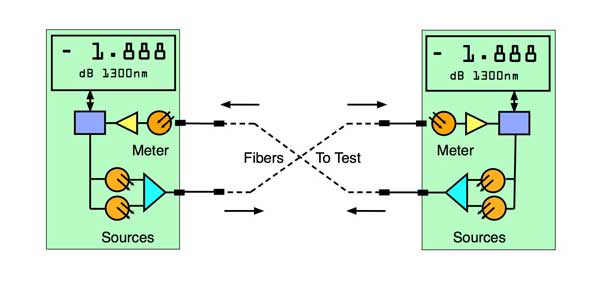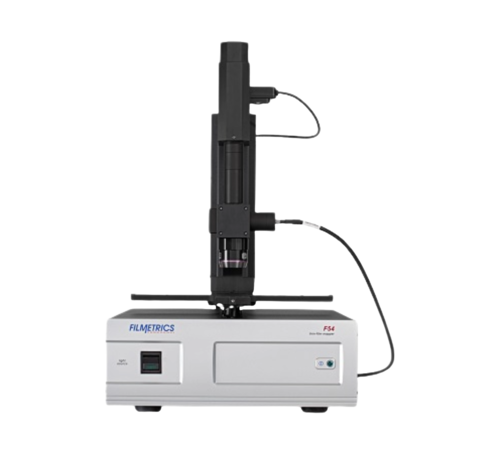Discover the Top Optical Fibre Diameter Analyser for Your Business
Optimize Your Fibre Optic Performance: Recognizing Optical Fibre Size Analyser Innovation
The efficiency of fibre optic systems is critically affected by the precision of their diameter, a variable often neglected in the quest of ideal signal stability. Comprehending the modern technology behind optical fibre size analysers discloses the intricate equilibrium between dimension accuracy and production top quality. These gadgets not only improve compliance with sector standards but likewise supply real-time understandings that can preemptively address potential issues. The implications of their use expand beyond plain dimension; they can essentially change the landscape of fibre optic effectiveness. What variables should one consider to harness their full possibility?
Significance of Optical Fiber Diameter
The diameter of optical fiber plays an important duty in identifying the efficiency and performance of communication systems. Alternatively, smaller sized diameters often tend to sustain less settings, which can enhance signal clearness and decrease crosstalk.

Furthermore, recognizing the size's effects can lead to cost financial savings by minimizing the demand for signal boosting and repeaters in substantial networks (optical fibre diameter analyser). Finally, the relevance of optical fibre size can not be overstated, as it directly impacts the overall effectiveness and integrity of modern communication systems

How Diameter Impacts Signal Quality
Signal top quality in optical fibre systems pivots substantially on the diameter of the fibre. The diameter affects a number of key parameters, consisting of attenuation, transmission capacity, and modal dispersion. A smaller sized size can cause higher attenuation rates, causing signal loss as light trips through the fibre. This attenuation can compromise the integrity of the transmitted information, resulting in a decrease in signal quality, particularly over fars away.
Conversely, larger diameters usually permit for enhanced light capture and decreased modal dispersion, boosting signal clarity. In multimode fibres, a larger core diameter can support several light settings, however it may also introduce intermodal dispersion, which can deteriorate signal high quality. Selecting the optimum fibre diameter is critical for accomplishing the wanted efficiency in particular applications.
In addition, the interaction in between the fiber diameter and the wavelength of the light made use of plays a vital function in figuring out the reliable transmission range and total signal honesty. Therefore, recognizing exactly how fibre size affects signal top quality is essential for network designers and designers striving to optimize optical fiber systems for dependable, high-speed information transmission.
Introduction of Size Analyser Technology
In many optical fiber manufacturing procedures, exact dimension of fibre size is essential for guaranteeing consistent performance and high quality (optical fibre diameter analyser). Size analysers are innovative instruments designed to evaluate the physical measurements of optical fibres with high accuracy. They use innovative optical and laser technologies to gauge the size, ovality, and concentricity of the fiber, therefore offering essential information for top quality control
These analysers can operate in-line during the manufacturing process or as part of off-line testing methods. In-line systems allow real-time monitoring, enabling makers to readjust specifications immediately, therefore maintaining optimal production conditions. Off-line analysers, on the other hand, supply extensive examinations of sets, ensuring that any type of variances from defined tolerances are determined and attended to.
Size Clicking Here analysers considerably add to the reduction of issues in optical fibers, improving total product reliability. By constantly determining key criteria, these innovations help with compliance with industry requirements and requirements. As the demand for high-performance optical fibers continues to increase, the duty of size analysers comes to be progressively essential in achieving the desired high quality and efficiency criteria in fiber optic systems.
Trick Functions of Fiber Diameter Analysers
Although numerous versions of fiber size analysers exist, they generally share numerous vital functions that improve their functionality and reliability. Among the most significant attributes is high-resolution measurement abilities, which ensure specific diameter readings, vital for maintaining quality assurance in fibre manufacturing. Furthermore, lots of analysers integrate innovative optical sensors designed to spot minute variations in fiber diameter, therefore offering invaluable information for process optimization.
One more essential feature is real-time surveillance, enabling drivers to receive prompt comments on fiber size throughout the production procedure (optical fibre diameter analyser). This ability promotes quick modifications and reduces the possibility of issues. Several analysers additionally come equipped with easy to use user interfaces, enabling drivers to conveniently navigate through settings and information results
Furthermore, robust information storage and analysis functionalities are essential for tracking historic efficiency fads and ensuring conformity with industry criteria. These functions jointly contribute to the effectiveness of fibre diameter analysers in maximizing fiber optic efficiency.
Best Practices for Fibre Optimization

First, regular calibration of optical fibre diameter analysers is necessary. This guarantees precise measurements and minimizes prospective discrepancies that might impact performance. Next, preserving a tidy workplace is crucial; dust and impurities can cause indicate destruction.
In addition, it is very important to choose fibres that satisfy details application demands. This includes evaluating variables such as attenuation, transmission capacity, and ecological conditions. Proper installment methods must also be stuck to, consisting of avoiding sharp bends and excessive stress, which can jeopardize fiber stability.
Furthermore, utilizing innovative tracking systems can promote real-time efficiency analyses, allowing timely identification of concerns. Normal screening and maintenance ought to be conducted to make certain that fibers continue to be within optimal functional specifications.
Last but not least, training personnel on the current fiber optimization innovations and methodologies will boost their capacity to implement effective strategies. By adhering to these ideal methods, organizations can significantly boost the efficiency and life expectancy of their optical fiber systems, making certain effective interaction and information transfer.
Conclusion
To conclude, the combination of optical fibre size analyser modern technology is essential for making best use of fiber optic performance. By ensuring exact measurements of fibre dimensions, these analysers significantly improve signal quality and lower losses during information transmission. Routine calibration and upkeep of the analysers are crucial to support ideal performance and conformity with industry criteria. Eventually, the application of great post to read this technology promotes enhanced data transmission prices and reinforces signal integrity, adding to the general effectiveness of fibre optic systems.
Signal quality in optical recommended you read fiber systems pivots significantly on the size of the fiber.In numerous optical fibre production processes, exact dimension of fibre size is vital for making certain regular efficiency and top quality. As the demand for high-performance optical fibres continues to rise, the function of diameter analysers becomes significantly vital in attaining the desired quality and performance standards in fibre optic systems.
These attributes jointly contribute to the efficiency of fibre diameter analysers in optimizing fibre optic performance.
In conclusion, the integration of optical fiber size analyser technology is important for optimizing fiber optic efficiency.